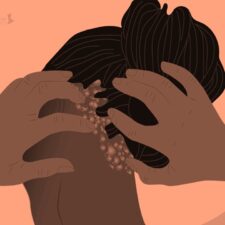
Dupuytren’s contracture is a hand condition that gradually causes the connective tissue under the skin of the palm to thicken and tighten, leading to curled or bent fingers—most commonly the ring and little fingers. While surgery has long been the standard treatment for more advanced cases, several non-surgical options now offer effective alternatives, especially in the early to moderate stages of the disease. These treatments focus on reducing symptoms, improving hand function, and delaying or avoiding surgery.
1. Collagenase Injections (Xiaflex)
Collagenase clostridium histolyticum, marketed as Xiaflex, is an FDA-approved enzyme injection that breaks down the collagen buildup in Dupuytren’s cords.
-
How it works: Xiaflex is injected directly into the cord of tissue causing the contracture. After 1–2 days, a healthcare provider manipulates the hand to help break the cord.
-
Benefits: Minimally invasive, outpatient procedure; quicker recovery time than surgery; effective for moderate contractures.
-
Risks/Side Effects: Swelling, bruising, and pain at the injection site; rare tendon rupture or allergic reactions.
2. Needle Aponeurotomy (Needle Fasciotomy)
This procedure, also known as percutaneous needle fasciotomy, uses a needle to puncture and weaken the diseased cord so the finger can be straightened.
-
How it works: Performed under local anesthesia, a needle is inserted through the skin to divide the fibrous cord.
-
Benefits: Minimally invasive; minimal downtime; can be repeated if the contracture recurs.
-
Risks/Side Effects: Higher recurrence rate compared to surgery; potential for nerve or tendon injury if not performed carefully.
3. Physical Therapy and Stretching
While not curative, physical therapy and home-based stretching programs can help maintain finger mobility, especially in early stages.
-
How it works: Hand therapists teach specific stretches and strengthening exercises; splints may be used to maintain finger extension.
-
Benefits: Non-invasive; supports function and comfort; may delay the need for intervention.
-
Limitations: Does not stop disease progression or correct established contractures.
4. Radiation Therapy
Low-dose radiation therapy can slow the progression of early-stage Dupuytren’s disease.
-
How it works: Radiation is applied to the affected tissue to reduce fibroblast activity and collagen production.
-
Benefits: May halt or slow progression in early stages; non-invasive; generally well-tolerated.
-
Risks/Side Effects: Mild skin irritation; long-term cancer risk is extremely low but still a consideration.
5. Enzyme or Biologic Research Therapies (Emerging Treatments)
Research is ongoing into new biologic therapies that target the molecular drivers of Dupuytren’s. These may one day offer additional non-surgical solutions.
-
Current status: Still in experimental phases; not yet approved for clinical use.
-
Potential: Could address the root cause of fibrosis rather than just treating symptoms.
Choosing the Right Treatment
The best treatment depends on:
-
Stage of the disease
-
Degree of finger contracture
-
Patient age and health
-
Functional impairment
Patients with mild or early-stage Dupuytren’s may benefit from observation, stretching, and possibly radiation. Moderate contractures are often effectively treated with Xiaflex or needle aponeurotomy. In advanced cases, surgery may still be necessary.
Final Thoughts
Non-surgical options for Dupuytren’s contracture are expanding, offering patients effective ways to manage the condition without the risks and downtime of traditional surgery. If you or a loved one is experiencing symptoms, consult a hand specialist early to explore the full range of treatment options and preserve hand function for the long term.







